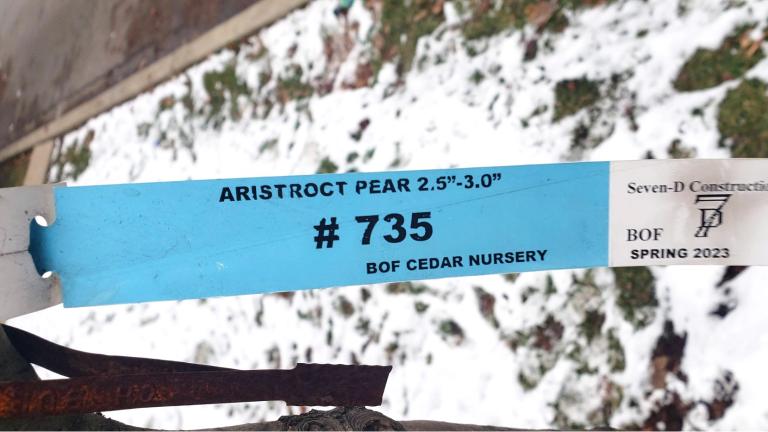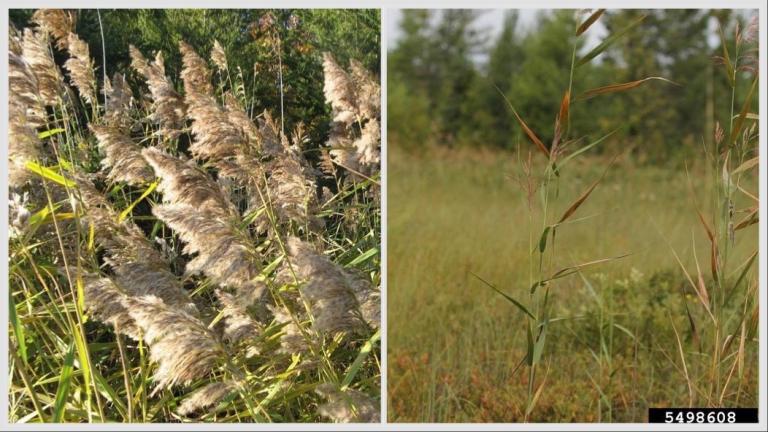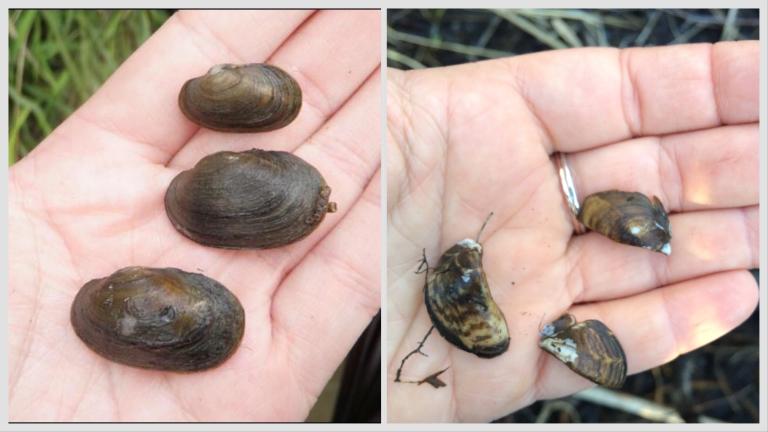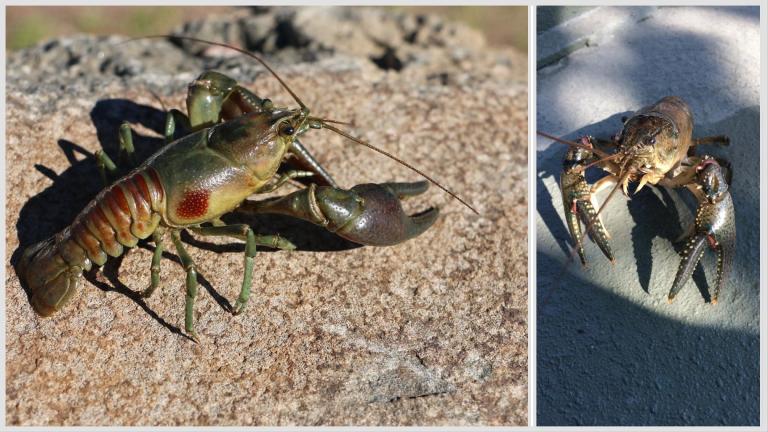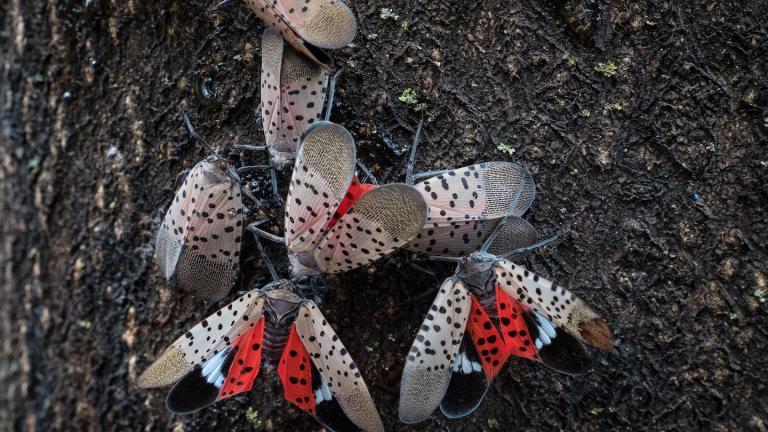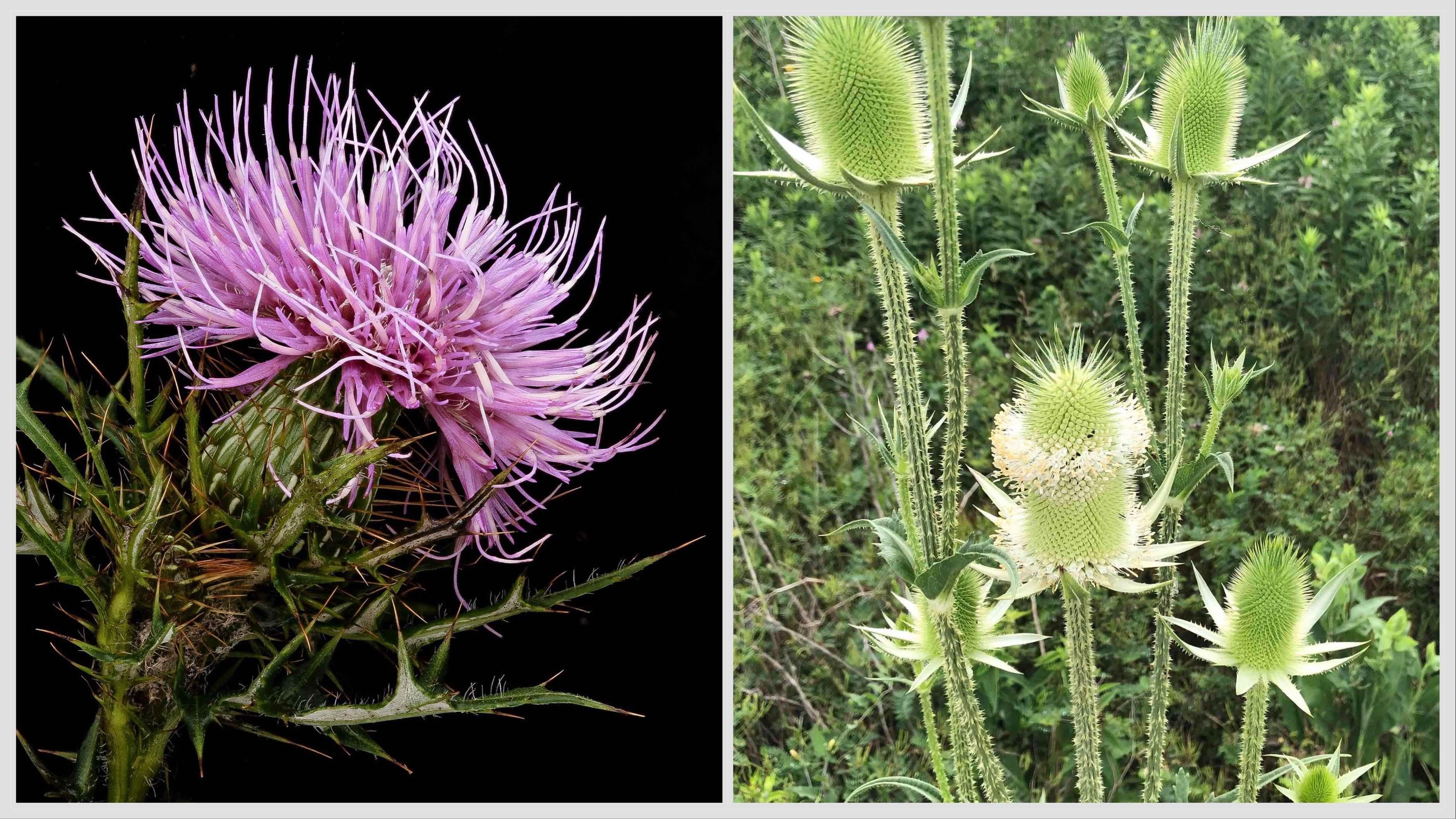 Prairie (or field) thistle on the left, cutleaf teasel on the right. Which is native and which is invasive? (USGS Bee Inventory and Monitoring Lab; Patty Wetli / WTTW News)
Prairie (or field) thistle on the left, cutleaf teasel on the right. Which is native and which is invasive? (USGS Bee Inventory and Monitoring Lab; Patty Wetli / WTTW News)
In honor of National Invasive Species Awareness Week, we'll be posting daily "dupes" — invasives that can easily be confused with native species.
We're kicking things off with thistle versus teasel.
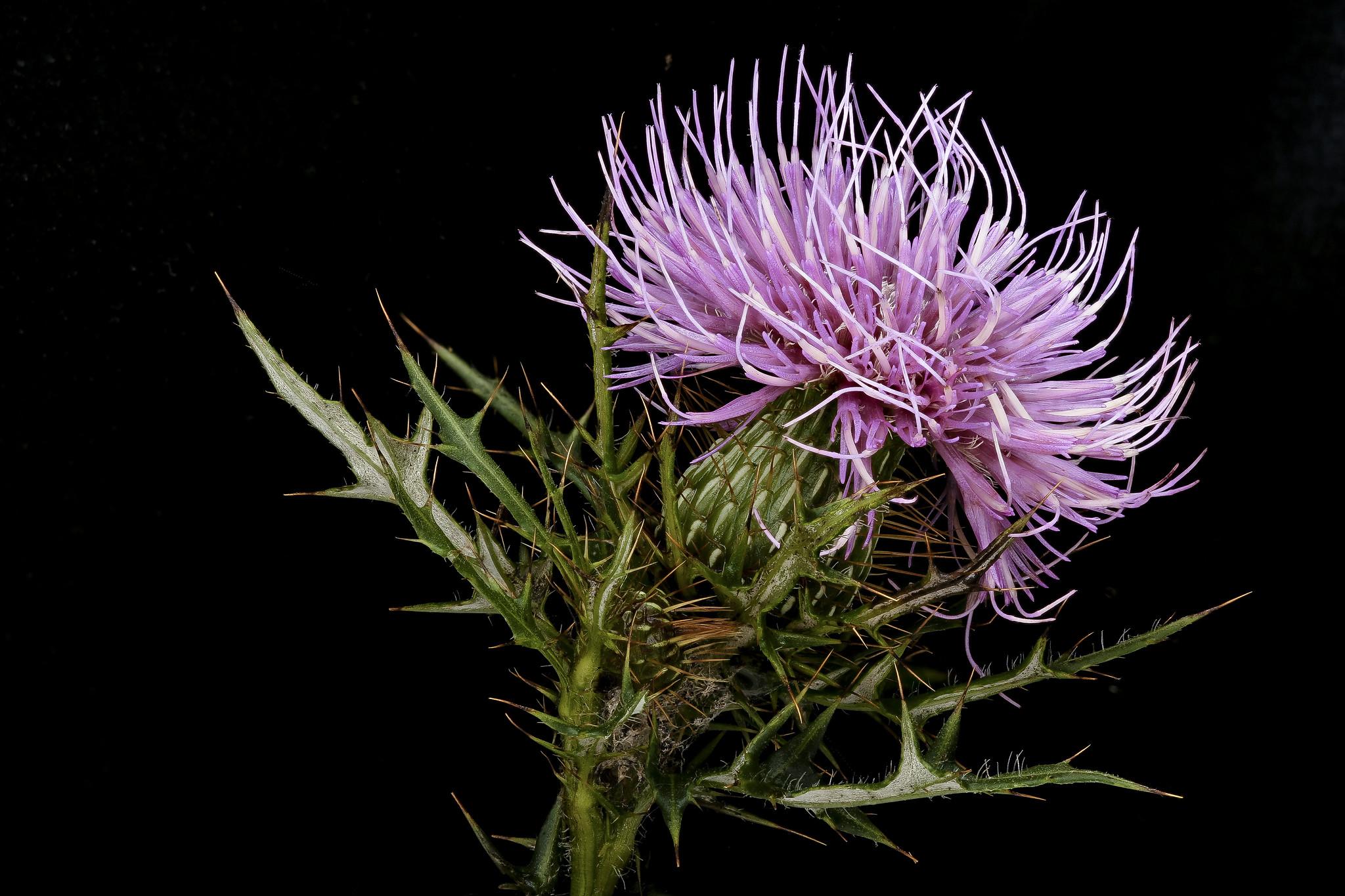 Pasture thistle, also known as field thistle, is a native plant and a sign of a high-quality prairie. (USGS Bee Inventory and Monitoring Lab / Flickr Creative Commons)
Pasture thistle, also known as field thistle, is a native plant and a sign of a high-quality prairie. (USGS Bee Inventory and Monitoring Lab / Flickr Creative Commons)
Surprise, this thistle is a highly prized native.
While it's true there are invasive thistles — notably Canada thistle, musk thistle and bull thistle — not all thistles are nuisances and their prickly appearance in a landscape shouldn't automatically register as "weed."
In fact, the presence of pasture/field thistle (Cirsium discolor), pictured here, as well as other rare natives like tall thistle (Cirsium altissimum), Hill’s thistle (Cirsium hillii) or dunes thistle (Cirsium pitcheri) is a sign of a high-quality prairie, according to the Chicago Botanic Garden.
These natives play an important role in local ecosystems, providing pollen and nectar for native bees, butterflies, moths and other insects. Goldfinches are known to dine out on tall thistle seeds.
Apart from loss of habitat, one of the biggest threats to native thistles are the weevils introduced to North America to control invasive thistles. Turns out, the beetles aren't particularly discriminating and are destroying natives along with invasives.
Invasive cutleaf teasel threatens already vulnerable natural areas and restoration sites. (Patty Wetli / WTTW News)
And here we have teasel, which not only looks like thistle, it sounds like it too.
The name might be unfamiliar to many Chicagoans, but anyone who's driven along an expressway in the region has seen this invasive plant standing tall in dense groupings on the side of the road. Though it's pictured above in full flower, teasel's more notable for its dried-out spindly brown spikes.
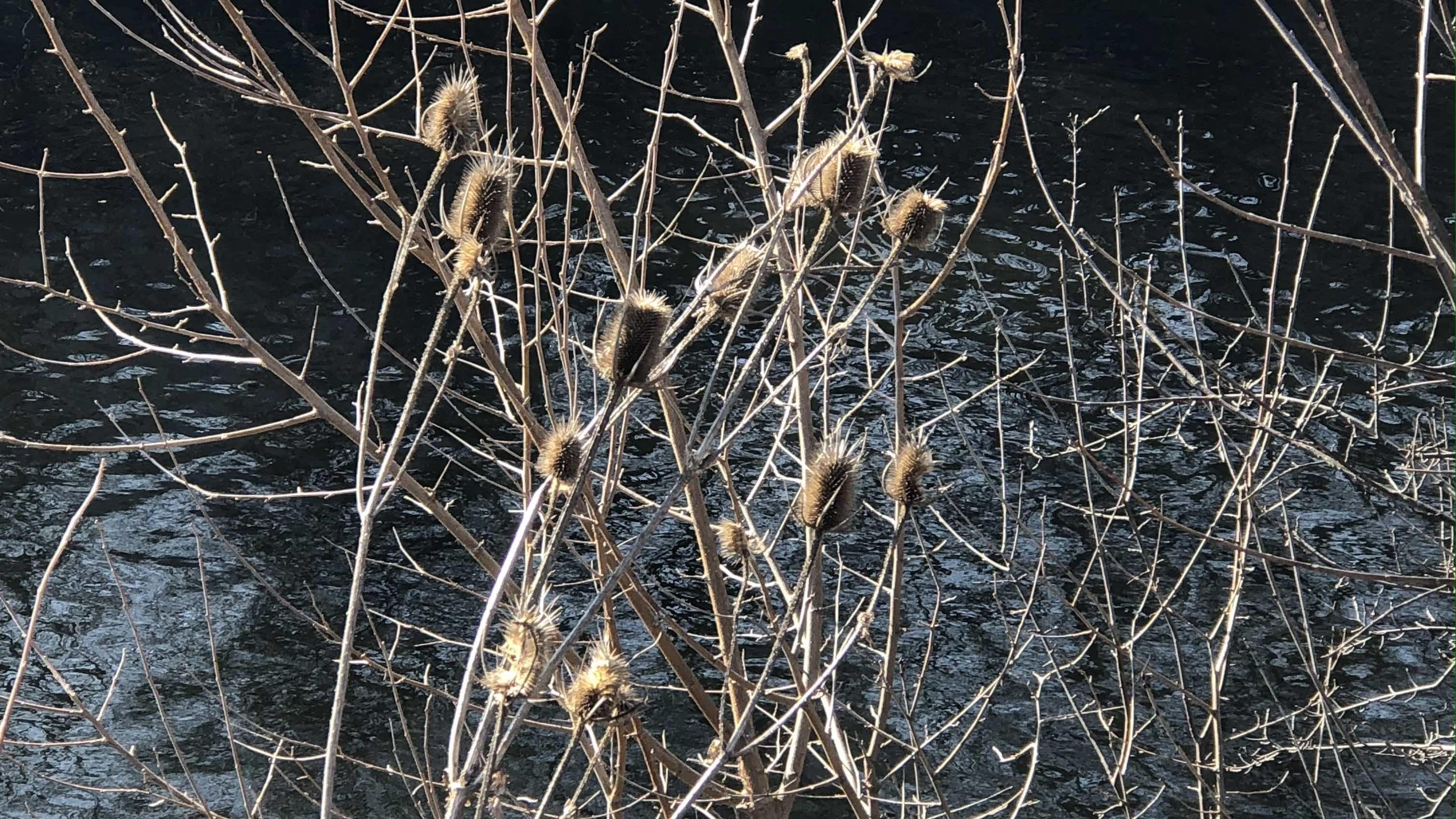 Look for teasel's signature dried spikes along roadsides and other disturbed areas. (Patty Wetli / WTTW News)
Look for teasel's signature dried spikes along roadsides and other disturbed areas. (Patty Wetli / WTTW News)
Teasel is a large family of the plants. The two most problematic members in Illinois are cut-leaved teasel (Dipsacus laciniatus L.) and common teasel (Dipsacus sylvestris Huds.), according to the University of Illinois Extension.
Where did it come from? Teasel is native to Europe and was brought to North America in the early 1700s, not accidentally, as with invasives like zebra mussels, but purposefully for cultivation. Its dried seed heads were used in textile manufacturing to raise the nap on woolen cloth (a process known as "teasing"), and it was also popular in dried flower arrangements.
Why is it a problem? Cut-leaved teasel is particularly aggressive and has been expanding rapidly in Midwestern states, especially along highways, but it's also threatening prairies and savannas, where it can form a monoculture if allowed to become established.
A lack of natural enemies — it's so spiky, herbivores give it a wide berth — allows teasel to proliferate, according to the University of Illinois Extension, and it also has massive reproductive capacity. A single sead head can produce as many as 2,000 seeds, which remain viable for up to two years.
To report an invasive species sighting send an email to [email protected]. Provide the following details: Location (GPS coordinates, address, crossroads, town — the more info the better), date, your name and contact information, and attach photographs.
Next up in the series: crayfish.
Contact Patty Wetli: @pattywetli | (773) 509-5623 | [email protected]

